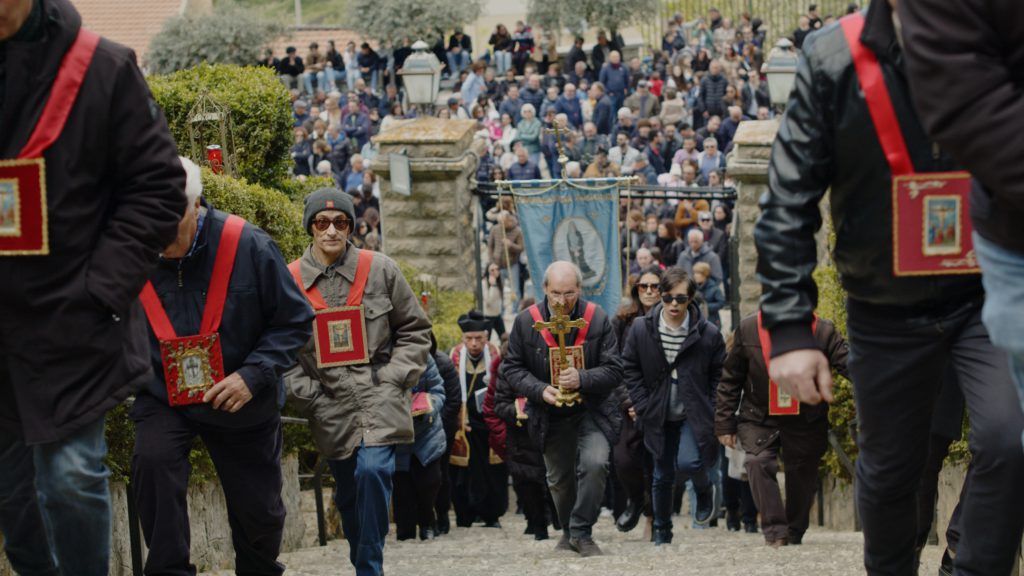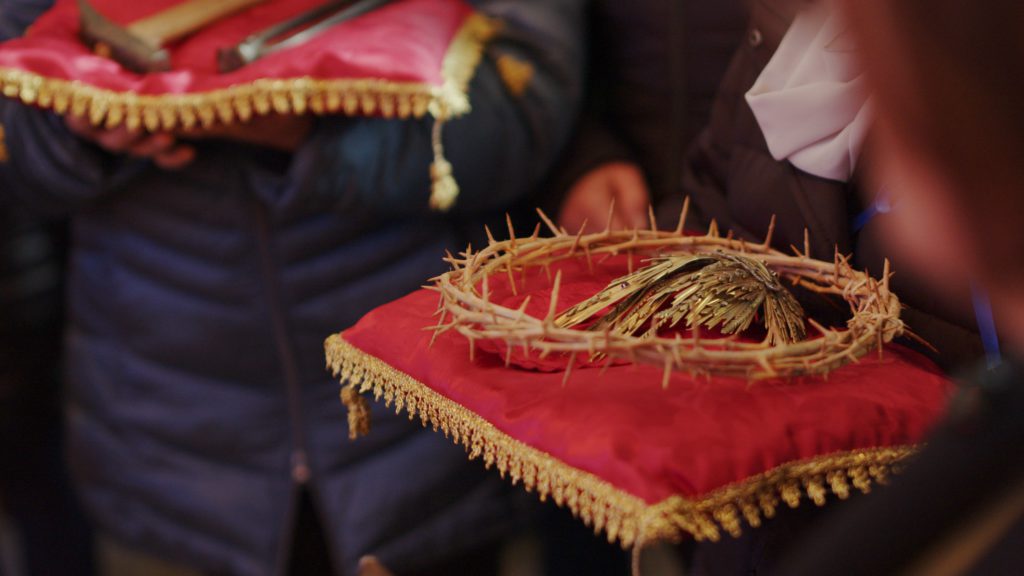The Holy Friday Laments of Bisacquino
In many communities, singing has traditionally accompanied ritual moments that mark the rhythm of collective life. In Bisacquino, one of the most distinctive expressions of this practice is the tradition of the Holy Friday Laments, a repertoire of funereal chants performed in the local Bisacquino dialect, whose origins date back to the 19th century.
The laments are intoned near the small Chapel of Calvary, a site regarded by the local community as a true sanctuary and place of devotion. The singers and the chorus gather beneath the olive trees flanking the chapel on both sides. In this moment of solemn concentration—an act of mourning and reflection—two groups of cantors face each other in what becomes a ritualised, quasi-competitive performance. Each group is led by a principal singer who narrates, through chant, the principal episodes of the Passion and Holy Week.
These chants are not only an expression of collective mourning for the death of Christ, but also a musical narration of the processional sequence itself, forming a kind of meta-musical language that mirrors and interprets the ritual unfolding. Through melody, rhythm, and the alternation of the two choirs, the community enacts a performative form of sacred storytelling that fuses devotion, identity, and soundscape.
At the same time, this element—while deeply rooted in religious devotion—also reflects the broader popular artistic sensibility of Bisacquino. Historically, the town has maintained a strong connection to folk theatre, particularly comic and tragicomic performances, which have long been part of local expressive culture.
In recent decades, this theatrical tradition has undergone a process of revitalization, evolving toward more dramatic and immersive forms. According to oral testimonies, theatre in Bisacquino serves not only as artistic expression but also as a means of reclaiming and reinterpreting local spaces. Performances often take place in shared public settings—streets, squares, courtyards—creating true open-air theatres that embody a dynamic relationship between performance, environment, and community participation.
Thus, the Holy Friday Laments, together with the local theatrical practices, constitute a living cultural system in which ritual, music, and performance articulate the intangible heritage of Bisacquino, reaffirming its communal values and modes of collective expression across generations.
This element has been included in the Register of Intangible Heritage of local interest of the Municipality of Bisacquino, as part of Intervention “Activation of the Observatory on the Intangible Cultural Heritage of the Territory through the application of the REIL methodology – Register of Intangible Heritage of Local Interest”, within the “BISACQUINO, BORGO DEL CINEMA E DELLE ARTI” project, funded by the NRRP (National Recovery and Resilience Plan), Mission: Digitalisation, innovation, competitiveness, culture and tourism, Component: Tourism and culture 4.0, Investment 2.1 “Attractiveness of villages” CUP D99I22000160006.



